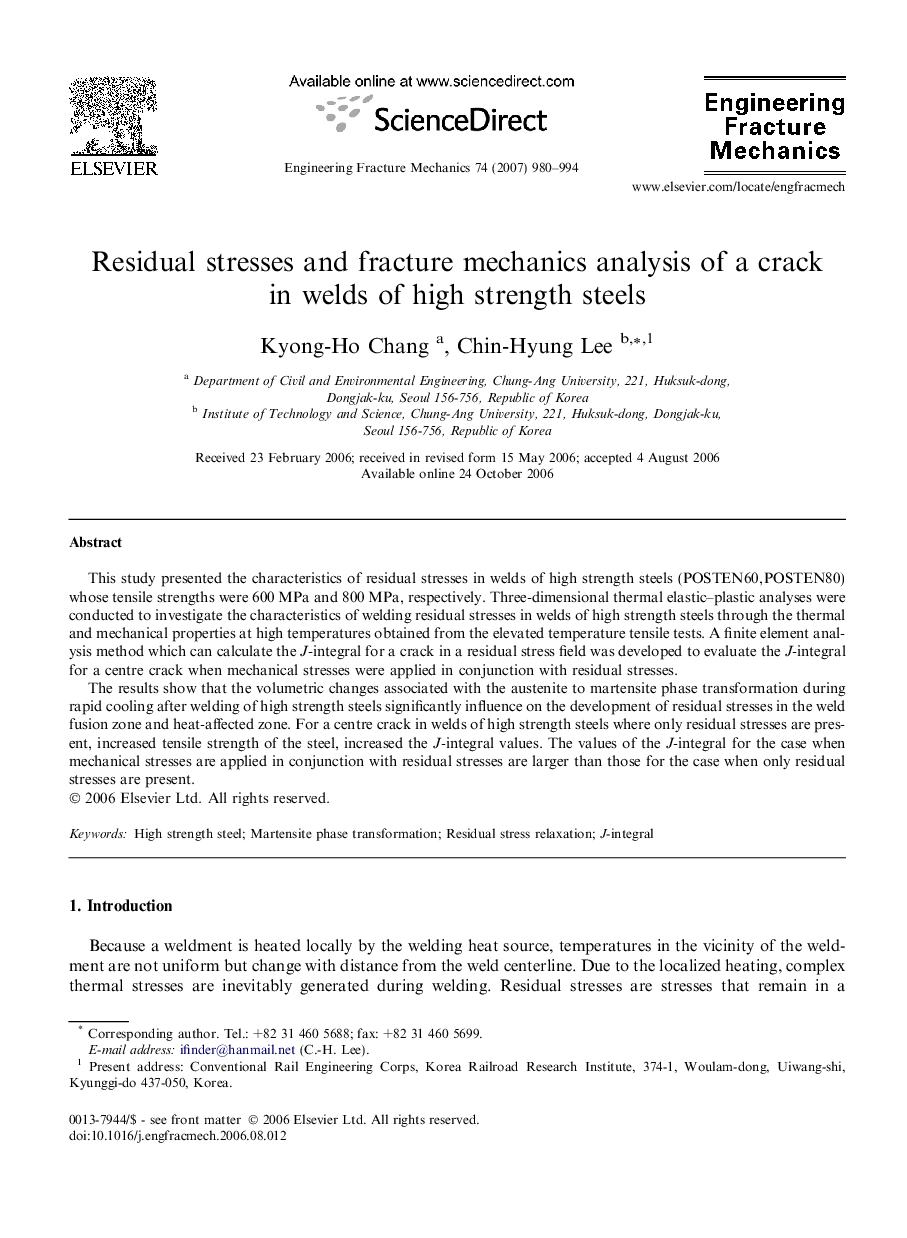| Article ID | Journal | Published Year | Pages | File Type |
|---|---|---|---|---|
| 771445 | Engineering Fracture Mechanics | 2007 | 15 Pages |
This study presented the characteristics of residual stresses in welds of high strength steels (POSTEN60, POSTEN80) whose tensile strengths were 600 MPa and 800 MPa, respectively. Three-dimensional thermal elastic–plastic analyses were conducted to investigate the characteristics of welding residual stresses in welds of high strength steels through the thermal and mechanical properties at high temperatures obtained from the elevated temperature tensile tests. A finite element analysis method which can calculate the J-integral for a crack in a residual stress field was developed to evaluate the J-integral for a centre crack when mechanical stresses were applied in conjunction with residual stresses.The results show that the volumetric changes associated with the austenite to martensite phase transformation during rapid cooling after welding of high strength steels significantly influence on the development of residual stresses in the weld fusion zone and heat-affected zone. For a centre crack in welds of high strength steels where only residual stresses are present, increased tensile strength of the steel, increased the J-integral values. The values of the J-integral for the case when mechanical stresses are applied in conjunction with residual stresses are larger than those for the case when only residual stresses are present.
